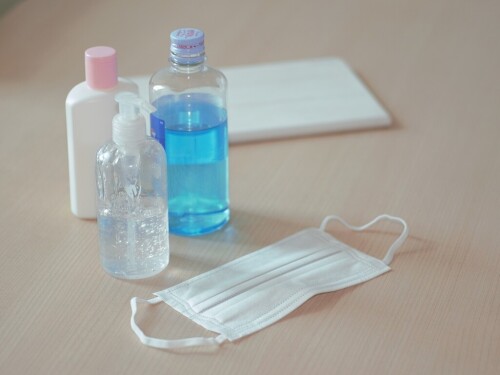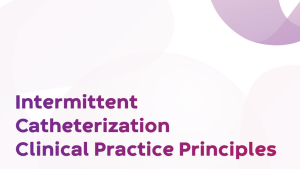The Intermittent Catheterization Clinical Practice Principles were developed by a panel of international experts in urology and continence care.
Their purpose is to:
These principles are expected to standardize care and improve outcomes using evidence-based recommendations for best practice quality IC care. IC is the gold standard treatment for those that cannot empty their bladder.¹
Every person deserves access to high quality care in all healthcare settings by trained healthcare professionals to promote a desirable quality of life and to be treated with kindness, dignity, and respect.
The IC user should be involved in all phases of their IC experience and shall receive the following, during:
1. Pre-treatment. 2. Initial catheter selection and education. 3. The lifespan of IC use.2
Use of the most current educational materials about IC and self-care.
As part of informed consent, information about the procedure, rationale, risks,
benefits, complications, and alternatives to IC should be provided in a way that they (individual/family/support person) can understand.
Consent should be regularly reevaluated with changes in status and consent may be withheld or withdrawn at any time.
Counseling, support and educational instruction should be provided in a languageand at a comprehension level suitable for the IC user.
Communication will beculturally considerate and delivered in a manner that respects the recipient.²

Explanation of what is to be expected once IC has been initiated, troubleshooting guidance and when to contact a healthcare professional with emphasis on the early
phase of treatment.
A comprehensive assessment including lifestyle, cultural, physical, psychosocial and emotional considerations with the user as an active participant. The opportunity to discuss with their healthcare professional the emotional impact of IC and any other concerns.
Referrals as necessary to occupational therapists, social workers, psychologists, counselors, or home care.

A private safe dignified clean environment for learning about IC.
Adequate time for teaching so the IC user feels confident to perform the procedure on their own.
Information regarding the array of of product options and their uses.²
The choice to participate in catheter selection, with assistance from a healthcare professional trained in IC, in choosing the type of catheter considering comfort and ease of use.
Individual instruction in catheter use including return demonstration of procedure by the IC user or caregiver ensuring comprehension and ability to perform the catheterization.
Education on techniques to manage difficulties with IC.
Guidance on daily fluid intake and strategies to prevent complications, both verbally and in a written format.
Information on scheduling frequency of IC provided, both verbally and in a written format.
Education on hygiene, different positions for catheterizing, adaptive equipment options, and urinary tract infection prevention, detection, and management.
Information on the holistic impact of IC to include the physical, psychological and social impact of IC on activities of daily living such as fluid intake, travel, sexuality and time management.
Instructions both verbally and in written format on managing the condition until supplies are obtained, the supply ordering process and cost/coverage for supplies.
Access to ongoing care and support that includes:

This document was modeled after United Ostomy Associations of America’s (UOAA) Ostomy and Continent Diversion Patient Bill of Rights (www.ostomy.org/bill-of-rights).1 Permission was granted by UOAA for similar language and content to be used in this publication.
The authors wish to extend gratitude to UOAA for their valuable contributions to patient advocacy and for their review and collaboration with this project. Thank you to the catheter users for reviewing this document and for their collaboration.
Additionally, the authors would like to acknowledge funding of this project was supported by Convatec, Medical Device company.
1. Neumeier V, et al. Indwelling catheter vs intermittent catheterization: is there a difference in UTI susceptibility?.BMC Infectious Diseases.2023;23(507):1-10.
2. Burgess J, Gleba J, Lawrence K, Mueller S. Ostomy and Continent Diversion Patient Bill of Rights. Journal of Wound Ostomy Continence Nursing.2022;49(3):251-260.
